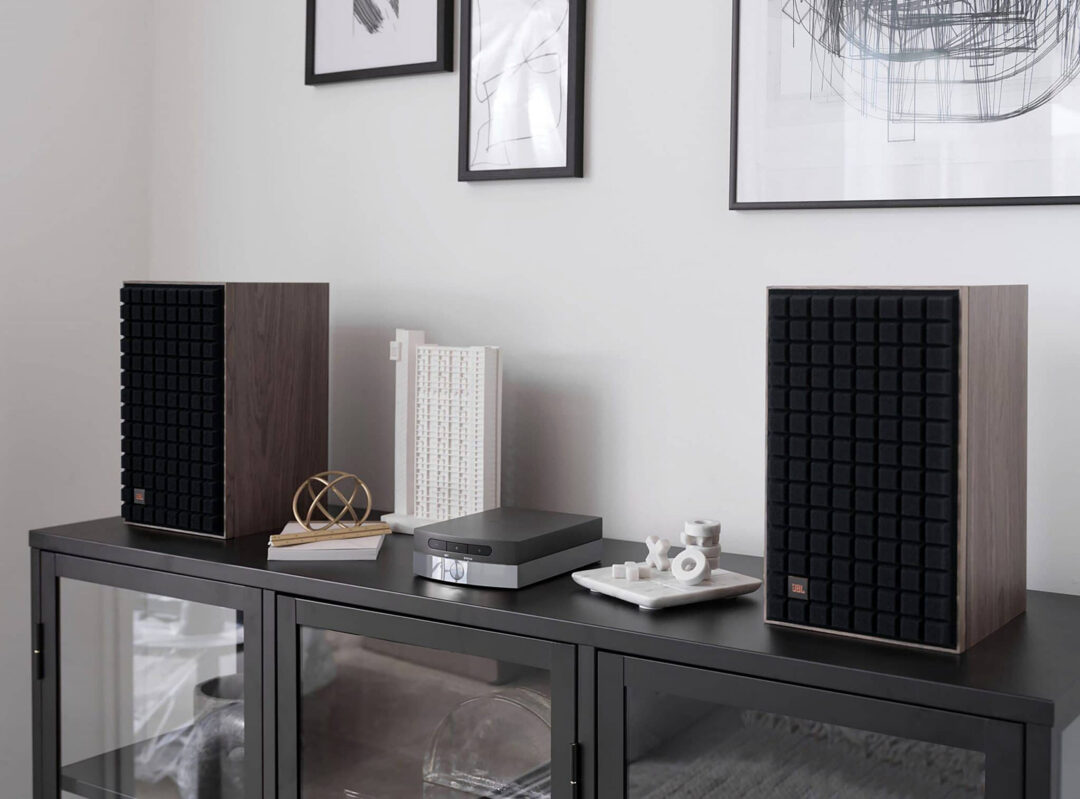Lack of space usually means small speakers with limited bass and sound pressure. The most ardent enthusiasts will buy a good subwoofer to minimise the problem, but it doesn’t always solve the whole equation.
At least not if the speakers lack dynamic capabilities and start to fizzle like an overheated light bulb when you turn up the volume.
Go up a tiny bit in size, to the JBL Synthesis 4309 or the Dynaudio Evoke 20 for example, and things immediately get much better, though you’ll have to smash both piggybanks as they don’t really belong in the budget class.
Neither does the JBL L52 Classic, but they cost half as much and are a bit smaller and easier to accommodate. The recipe is the same as for the much larger and much more expensive L82 Classic, another of our compact favourites, but here the woofer is noticeably smaller. So I thought the little L52 would hardly sound nearly as tough as the L82. Or the 4309 for that matter.
But you don’t know what you’re getting until you experience it, and if I was a little gobsmacked by the rich sound of the 4309, I was just as surprised by the even smaller L52 Classic. If the L82 had a door on the front, you could have easily fit an L52 inside.
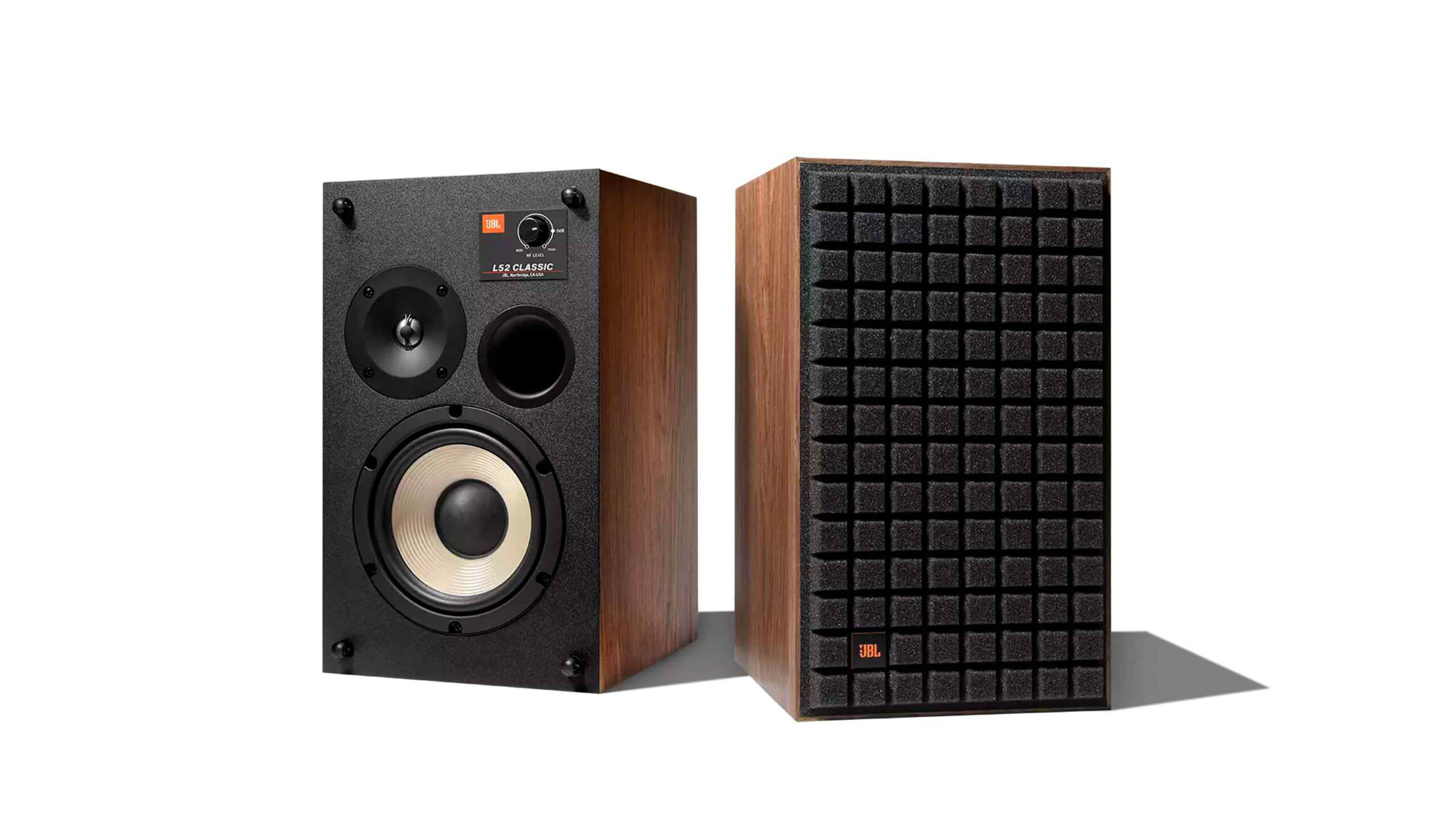
Tough little woofer
The woofer in the L82 is 20 cm, but in the L52 only 13.3 cm. A significant reduction in surface area, which normally means less reach and sound pressure in the bass. The tweeter is also a bit smaller, 20 mm versus 25 mm, but again it has a titanium diaphragm, just like in the L82.
The speaker has the bass reflex port on the front. This is an advantage for those who are thinking of placing the speaker on a shelf, because then it doesn’t matter so much if it’s next to the wall. The tweeter can be adjusted slightly up or down with a knob on the front and all of this can be hidden by a Quadrex grille in either black, blue or orange.
But because the small woofer has a longer stroke than normal for a 13cm woofer, and a larger voice coil that can withstand more heat, plus a flux ring that concentrates the magnetic field, it can play with more vigour when the speaker is playing loudly.
Which it loves to do. A small NAD AMP 1 with 2 x 40 watts had no problem driving the little JBLs with slightly impressive sound pressure levels. The little NAD amp wasn’t significantly affected by the low 85 dB sensitivity, nor by the low 4 ohm system impedance.
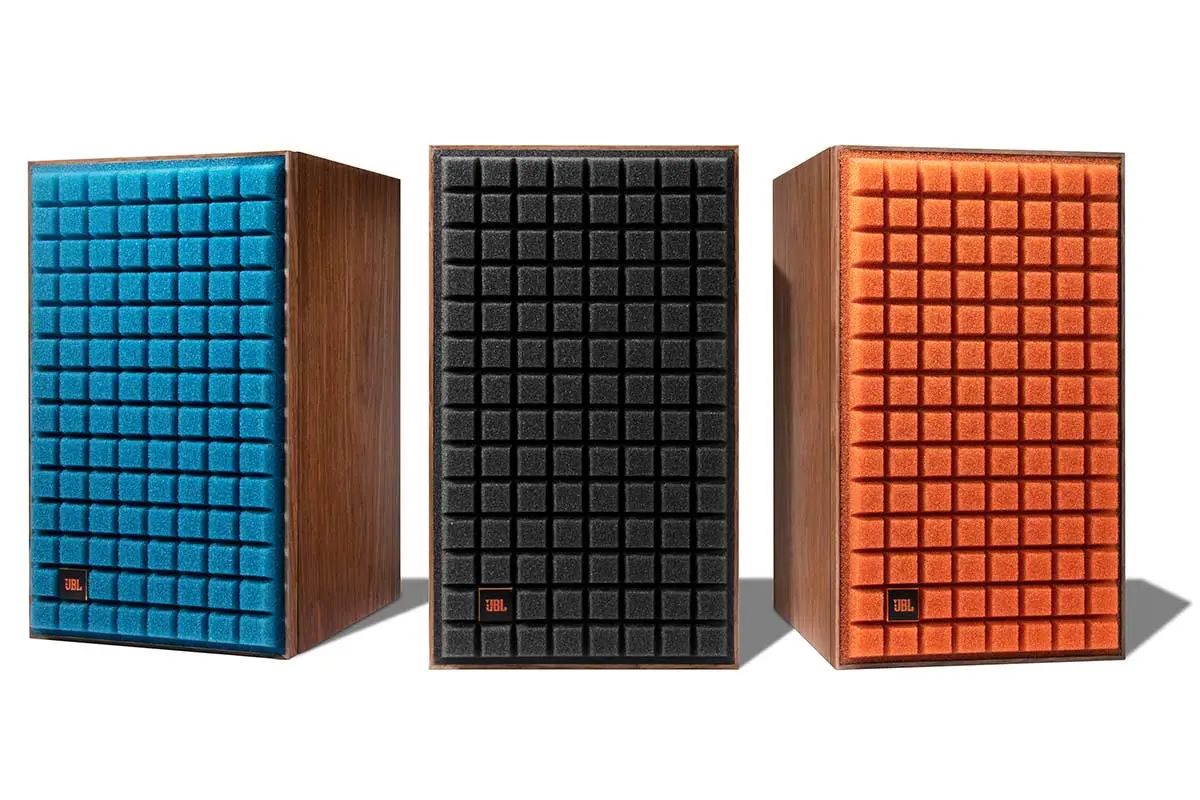
Few limitations
With the more potent Marantz Model 40n, I really got a kick out of the small woofers.
For example, the bass response on Sade’s Soldier of Love was tighter, deeper and more potent. The harsh and slightly abrasive reproduction of the cymbals disappeared and the speakers opened up and delivered an unusually big soundstage for being so small.
There is no real deep bass. But it goes deep enough to get the depth of the biggest drums and has no problem making Gary Peacock’s floor bass rumble through the room.
The very deepest notes of a concert grand are slightly lost, but the sound is fully present and there is a nice depth to the timbres of the instruments. As long as you don’t turn up the treble with the knob, you get a rich soundstage with a warm tone, the kind you’re grateful for when playing loud.
Too loud they can play. Not to the point where curtains flutter and plaster falls off the walls – some moderation is needed with such a small speaker – but you can clearly tell that the lively JBLs are tuned for fun.
At the same time, they have something monitor-like about them, making vocal samples rich in sound and free of ugly emphasis. Instruments are allowed to sound pretty much free and uncolored out of the speakers. Which are never sharp or harsh.
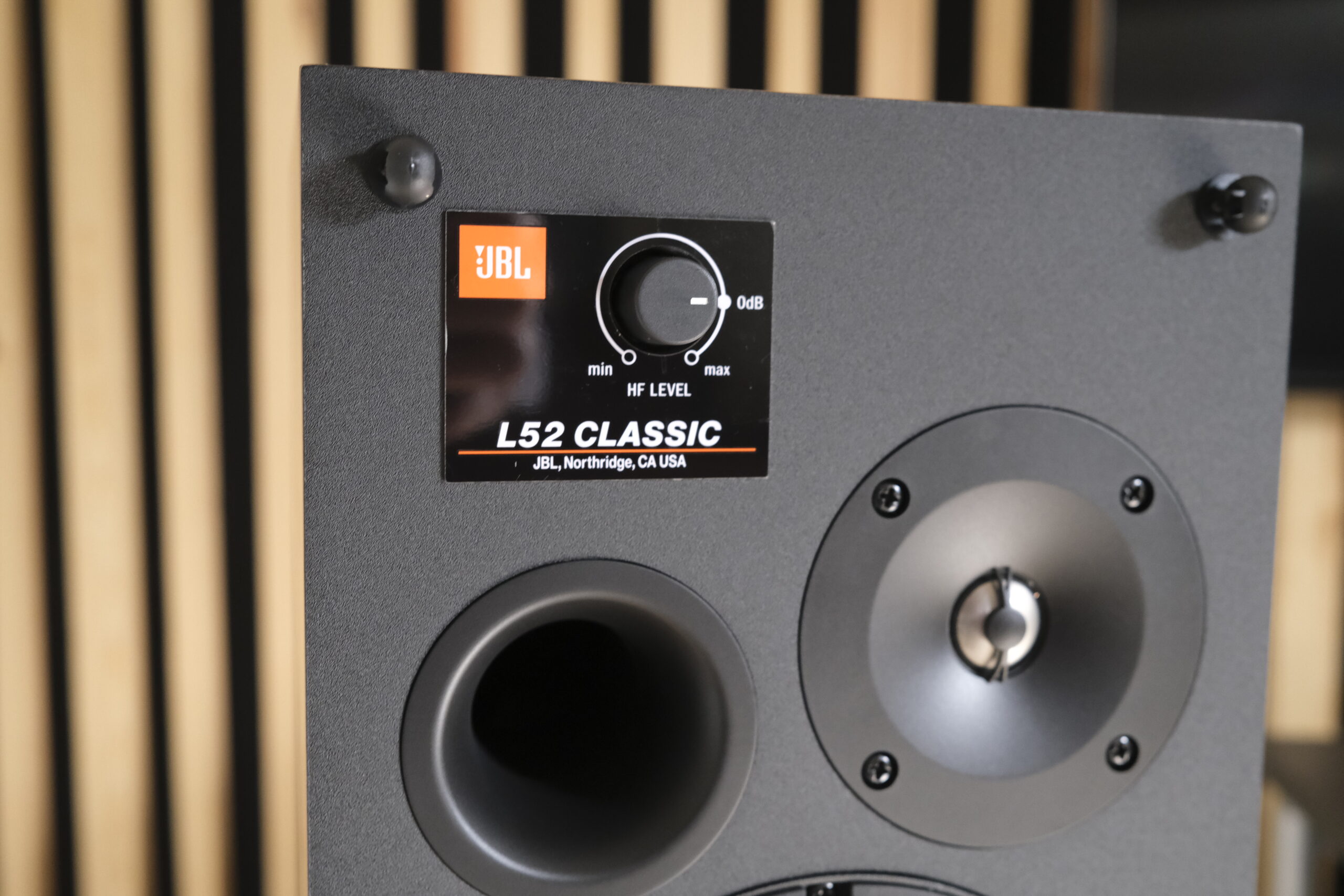
There may not be all the transparency or detail compared to a pair of Audiovector QR1s, but the L52 Classic has more potent bass and is more playful and engaging with rhythmic music. The JBL speakers bear comparison with the more expensive reference KEF LS50 Meta, which is a better option for those who have classical music on their playlist and never bother with “modern” rhythmic music.
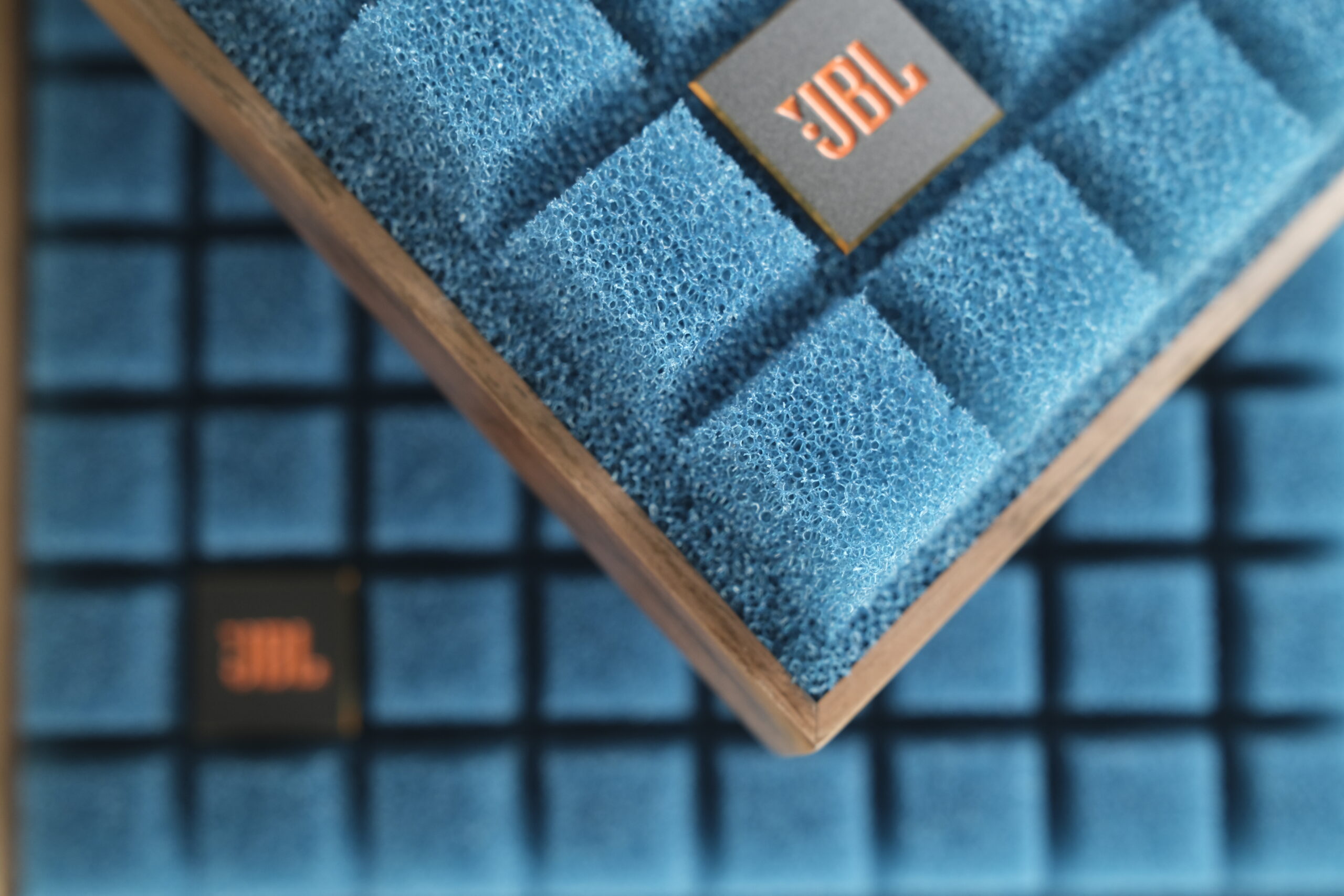
Conclusion
The JBL L52 Classic is the perfect speaker for anyone who is short on space but wants a really tough speaker that plays most music with commitment and empathy. It plays with almost the same energy and punch as the more than twice as expensive L82 Classic, but is much easier to position. It’s particularly well suited to small rooms, on a shelf, but will do just as well in a large living room. That’s really the only place I’d recommend a subwoofer as well, because otherwise the L52 Classic stands perfectly well on its own.

We think
Dynamic and engaging and with unusually potent bass. Likes to play loud, you don't hear any distortion then either. You don't get the whole lowest octave from a concert grand. There is more detail elsewhere.
1000 €
Specifications
- Type: two-way compact speaker
- Woofer: 13.3 cm fibre cone (JW135PW-4)
- Tweeter: 20 mm titanium diaphragm (JT020TI1-4)
- Sensitivity: 85 dB
- Impedance: 4 ohms
- Frequency range: 47-24 000 Hz (-6 dB)
- Dimensions/weight: 33 x 19.6 x 21.6 cm/5 kg
- Colour: Walnut, black (black, blue or orange grille)
- Web: jbl.com
